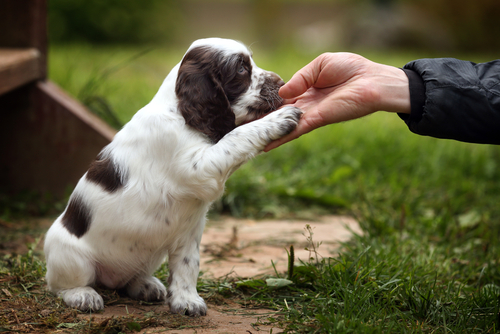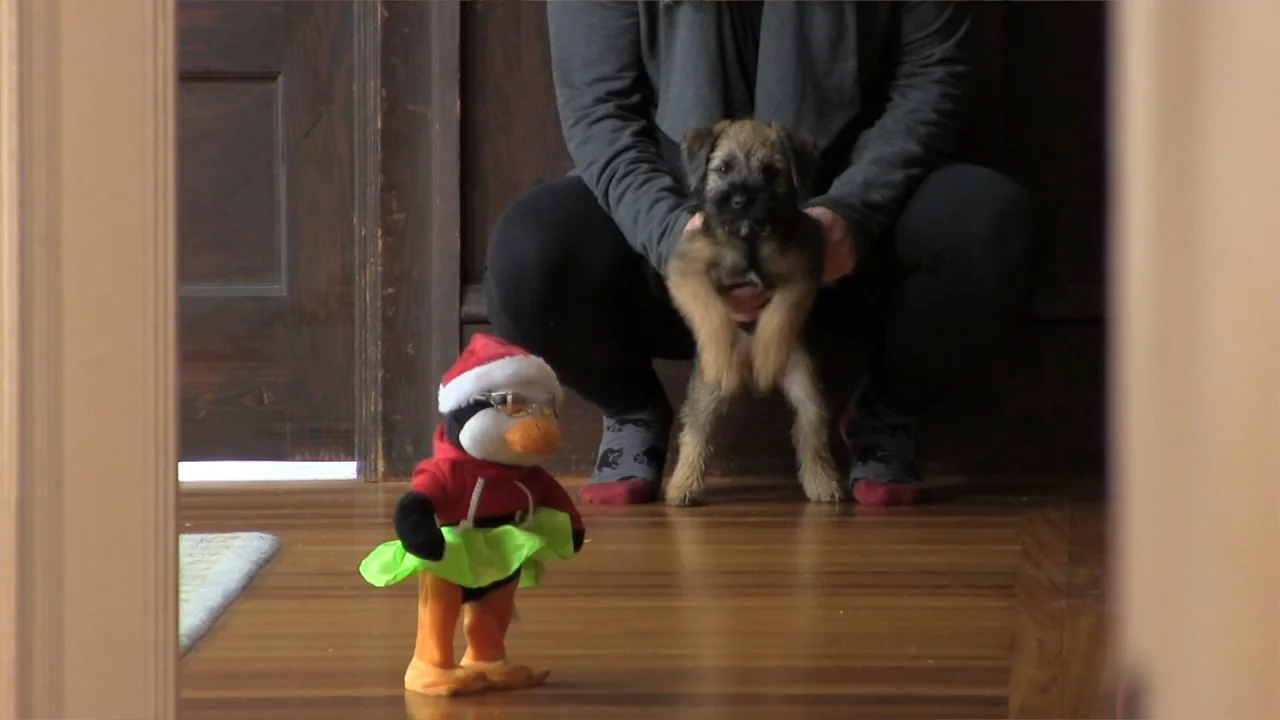Puppy Training Tips for First-Time Owners: Building a Strong Bond with Your Dog
Puppy Training Tips for First-Time Owners: Building a Strong Bond with Your Dog
Blog Article
Top Puppy Training Techniques to Ensure a Well-Behaved Animal
Efficient young puppy training is important for cultivating a well-behaved companion, and different techniques can considerably affect a pet's growth. Amongst these, positive reinforcement stands apart as a foundational strategy, promoting depend on and motivating desirable behaviors. Uniformity in commands and very early socialization are equally essential, laying the groundwork for a well-adjusted pet dog. In addition, the functions of cage training and leash decorum can not be forgotten. As we discover these techniques further, it comes to be clear that the success of young puppy training hinges on a combination of strategies that can change your pet's habits in remarkable ways.
Favorable Reinforcement Methods
Making use of positive support methods is essential for reliable puppy training, as it motivates desired actions through incentives rather than punishment. This method capitalizes on the all-natural knowing procedures of canines, enhancing good habits by providing instant and substantial benefits, such as deals with, praise, or play. By linking positive outcomes with certain activities, pups are more probable to duplicate those habits in the future.
Rewards should be offered instantly after the preferred behavior takes place to produce a clear connection in the puppy's mind. In addition, differing the kinds of benefits can maintain a pup's rate of interest and motivation throughout the training procedure.

Consistency in Educating Commands
Maintaining consistency in training commands is essential for reinforcing the lessons found out via favorable support methods. Pets flourish on regular and predictability, so utilizing the very same spoken commands and hand signals for details behaviors is necessary. This harmony helps pups understand what is expected of them, minimizing complication and aggravation for both the family pet and the instructor.

Timing additionally plays a significant role in consistency. Commands must be provided without delay throughout training sessions and adhered to promptly by favorable reinforcement, such as deals with or praise. This instant response aids strengthen the association in between the command and the wanted actions.
Integrating uniformity right into training sessions will certainly create a stable understanding environment, promoting quicker mastery of commands. Ultimately, a well-structured approach promotes a solid bond between the pup and its proprietor, resulting in a much more obedient and well-behaved pet.
Socializing With Various Other Family Pets
Socialization with other family pets is important for a pup's growth, as it assists them discover appropriate actions and communication abilities in varied social contexts. Very early interactions with various animals can substantially influence a young puppy's personality and adaptability in different scenarios. When puppies are revealed to a variety of animals, they come to be check this site out more confident and much less frightened, which can prevent prospective behavior issues later in life.

Teach your puppy to identify signals from other pet dogs, such as indications of playfulness or discomfort, cultivating shared regard and understanding. Routine socializing not click only boosts your young puppy's social skills yet also adds to their overall wellness, creating a much more harmonious living atmosphere.
Pet Crate Training Conveniences
Acknowledging the various benefits of dog crate training can greatly boost both the young puppy's and owner's experience. Crate training gives a safe and safe atmosphere for young puppies, guaranteeing they feel secured when left alone. This complacency can considerably lower anxiousness and stress and anxiety degrees for both the owner and the pet dog.
Additionally, cages function as an important house-training tool. Puppies naturally stay clear of staining their sleeping location, thereby motivating them to hold their bladder up until they are let outdoors. This instinct can accelerate the house-breaking process, fostering excellent habits early on.
When without supervision,Crate training additionally helps in handling a young puppy's habits - puppy training. By giving a marked room, proprietors can prevent destructive behaviors, such as chewing on furniture or getting involved in dangerous materials. In addition, pet crates can be valuable throughout traveling, using a familiar area that can help calm a pup in brand-new atmospheres.
Last but not least, establishing a cage regular encourages freedom, enabling young puppies to learn how to be alone without concern. In general, cage training is an effective technique for promoting peace, security, and discipline, causing a well-adjusted, well-behaved family pet.
Leash Training Basics
Leash training is an essential aspect of accountable pet possession that ensures a delightful and safe strolling experience for both the pup and its owner. Correct leash training starts early, preferably during the young puppy's socializing period. This training aids establish great practices and advertises favorable behaviors when out in public.
To start, select a comfortable collar or harness that fits your young puppy well. Affix a tough leash, guaranteeing it is not as well long, as this can result in pulling and unpredictable habits. Begin in a silent setting to reduce interruptions and gradually present your young puppy to new environments.
Use positive reinforcement techniques, such as treats and praise, to motivate your young puppy to stroll beside you. If your puppy pulls, stop strolling and wait for them to return to your side prior to continuing.
Additionally, incorporate short training sessions with enjoyable distractions to construct your pup's emphasis. With commitment and perseverance, chain training will certainly result in a well-mannered companion, making walks pleasurable for both the proprietor and the puppy.
Verdict
Finally, utilizing effective puppy training techniques is critical for creating a mannerly pet. Favorable reinforcement cultivates trust fund and motivates preferred behaviors, while uniformity in commands aids in comprehension. Socializing with other pets enhances adaptability and social abilities, and cage training provides a safe and secure setting that supports house-training initiatives. Leash training develops appropriate walking behaviors, contributing to enjoyable getaways. In general, these approaches collectively advertise a harmonious connection between pups and their owners.
As we discover these techniques further, it becomes clear that the success of pup training pivots on a mix of techniques that can transform your pet's behavior in remarkable means.
Using her explanation positive reinforcement methods is crucial for efficient puppy training, as it urges wanted behaviors through rewards rather than penalty.Crate training also assists in managing a pup's actions when not being watched.Leash training is a basic facet of responsible pet dog ownership that ensures a safe and enjoyable strolling experience for both the young puppy and its proprietor.In verdict, utilizing effective puppy training techniques is essential for establishing a well-behaved animal.
Report this page